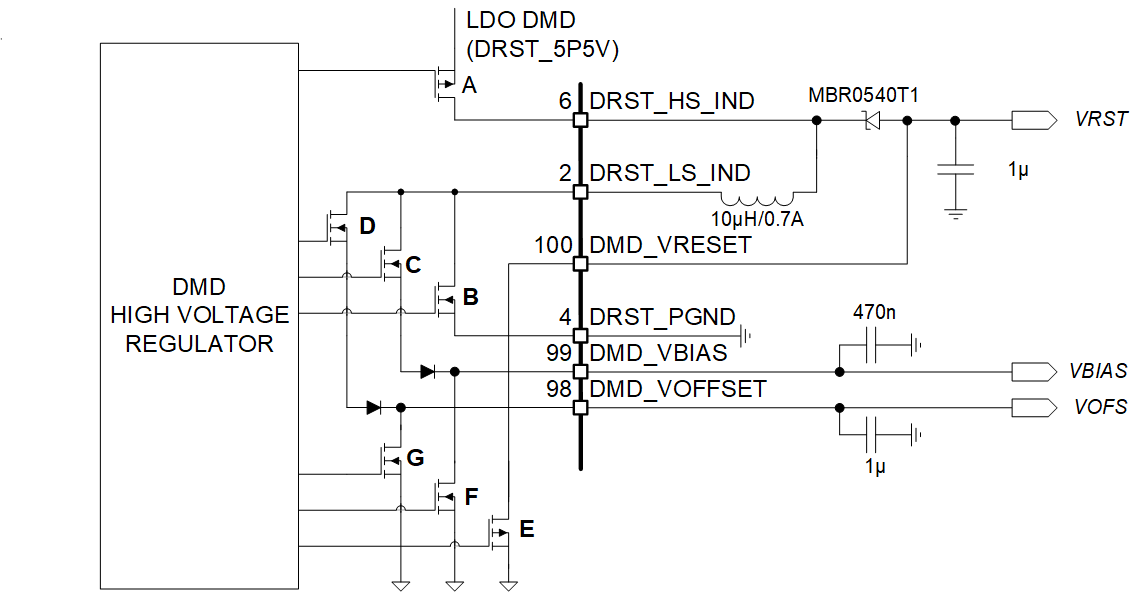DLPS052A October 2015 – September 2023 DLPA3000
PRODUCTION DATA
- 1
- 1 Features
- 2 Applications
- 3 Description
- 4 Revision History
- 5 Description (cont.)
- 6 Pin Configuration and Functions
- 7 Specifications
-
8 Detailed Description
- 8.1 Overview
- 8.2 Functional Block Diagram
- 8.3
Feature Description
- 8.3.1 Supply and Monitoring
- 8.3.2 Illumination
- 8.3.3 DMD Supplies
- 8.3.4 Buck Converters
- 8.3.5 Auxiliary LDOs
- 8.3.6 Measurement System
- 8.3.7 Digital Control
- 8.4 Device Functional Modes
- 8.5 Register Maps
- 9 Application and Implementation
- 10Power Supply Recommendations
- 11Layout
- 12Device and Documentation Support
- 13Mechanical, Packaging, and Orderable Information
Package Options
Mechanical Data (Package|Pins)
- PFD|100
Thermal pad, mechanical data (Package|Pins)
- PFD|100
Orderable Information
8.3.3.2 DMD HV Regulator
The DMD HV regulator generates three high voltage supplies: DMD_VRESET, DMD_VBIAS and DMD_VOFFSET (see Figure 8-16). The DMD HV regulator uses a switching regulator (switch A-D), where the inductor is time shared between all three supplies. The inductor is charged up to a certain current value (current limit) and then discharged into one of the three supplies. If not all supplies need charging, the time available will be equally shared between those that do need charging. The recommended value for the capacitors is 1 µF for VRST and VOFS, and 470 nF for VBIAS. The inductor value is 10 µH.
 Figure 8-16 DMD High Voltage
Regulator
Figure 8-16 DMD High Voltage
Regulator